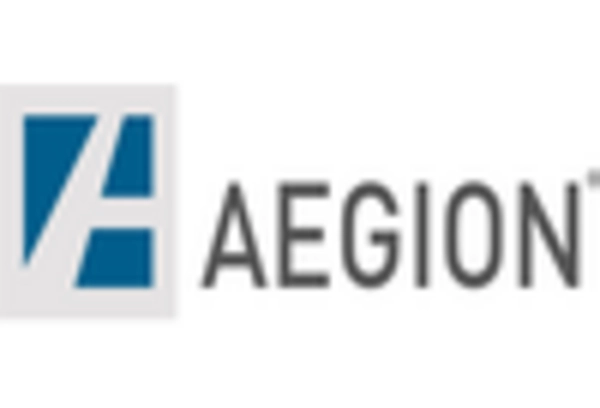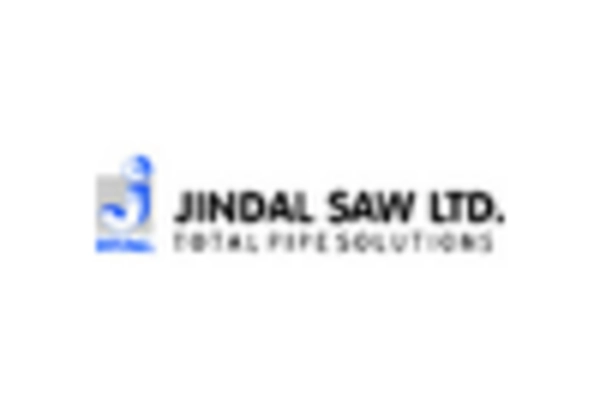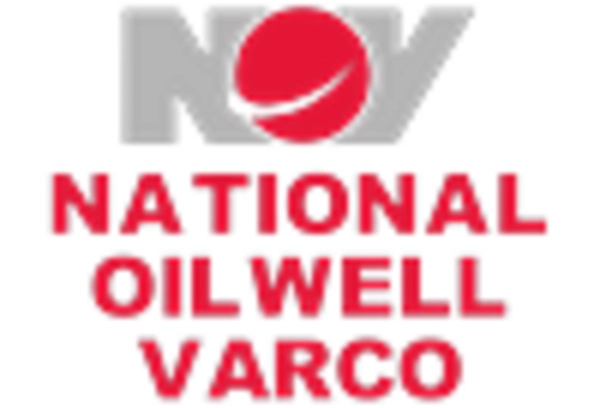Infrastructure Investment
The gre pipes market is currently experiencing a surge in demand due to significant investments in infrastructure across the United States. Federal and state governments are allocating substantial budgets for the modernization of water and wastewater systems, which is expected to reach approximately $100 billion by 2026. This investment is driven by the need to replace aging pipelines and improve water quality. As a result, the gre pipes market is poised for growth, as these materials offer enhanced durability and resistance to corrosion, making them ideal for long-term infrastructure projects. Furthermore, the emphasis on sustainable materials in construction is likely to bolster the adoption of gre pipes, as they align with environmental goals and provide cost-effective solutions for municipalities.
Increased Regulatory Standards
The gre pipes market is influenced by the increasing regulatory standards aimed at ensuring the safety and quality of water infrastructure. Recent legislation has mandated stricter guidelines for materials used in water distribution systems, pushing municipalities to adopt more reliable and durable solutions. As a result, the demand for gre pipes, known for their resistance to corrosion and chemical degradation, is likely to rise. Compliance with these regulations not only enhances public health but also encourages investment in modern piping systems. The gre pipes market is expected to benefit from this trend, as stakeholders seek to meet regulatory requirements while also improving the overall efficiency of their water management systems.
Shift Towards Eco-Friendly Materials
The gre pipes market is benefiting from a notable shift towards eco-friendly materials in construction and infrastructure projects. As environmental concerns gain prominence, stakeholders are increasingly prioritizing sustainable options that minimize ecological impact. Gre pipes, made from composite materials, are recognized for their lower carbon footprint compared to traditional piping solutions. This shift is reflected in the growing market share of eco-friendly products, which is projected to increase by 25% over the next five years. Additionally, the gre pipes market aligns with the broader trend of circular economy practices, where materials are reused and recycled, further enhancing their appeal to environmentally conscious consumers and businesses.
Technological Innovations in Manufacturing
The gre pipes market is experiencing a wave of technological innovations that enhance the manufacturing processes of these pipes. Advanced techniques such as 3D printing and automated production lines are streamlining the creation of gre pipes, resulting in improved quality and reduced costs. These innovations not only increase production efficiency but also allow for customization to meet specific project requirements. As a result, the gre pipes market is likely to see a rise in demand from contractors and engineers who seek reliable and tailored solutions for their projects. Furthermore, the integration of smart technologies in piping systems is expected to revolutionize the industry, providing real-time monitoring and maintenance capabilities.
Rising Demand for Water Management Solutions
The gre pipes market is witnessing an increasing demand for efficient water management solutions, particularly in urban areas facing water scarcity. As populations grow and climate change impacts water availability, municipalities are seeking innovative ways to manage their water resources. The gre pipes market is well-positioned to address these challenges, as these pipes facilitate better water distribution and reduce leakage rates. Recent studies indicate that the implementation of advanced piping systems can decrease water loss by up to 30%, thereby enhancing overall water efficiency. This trend is likely to drive the adoption of gre pipes, as cities prioritize sustainable practices and invest in technologies that promote responsible water usage.

















Leave a Comment